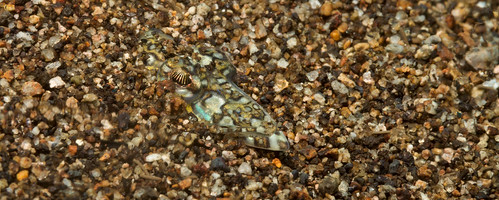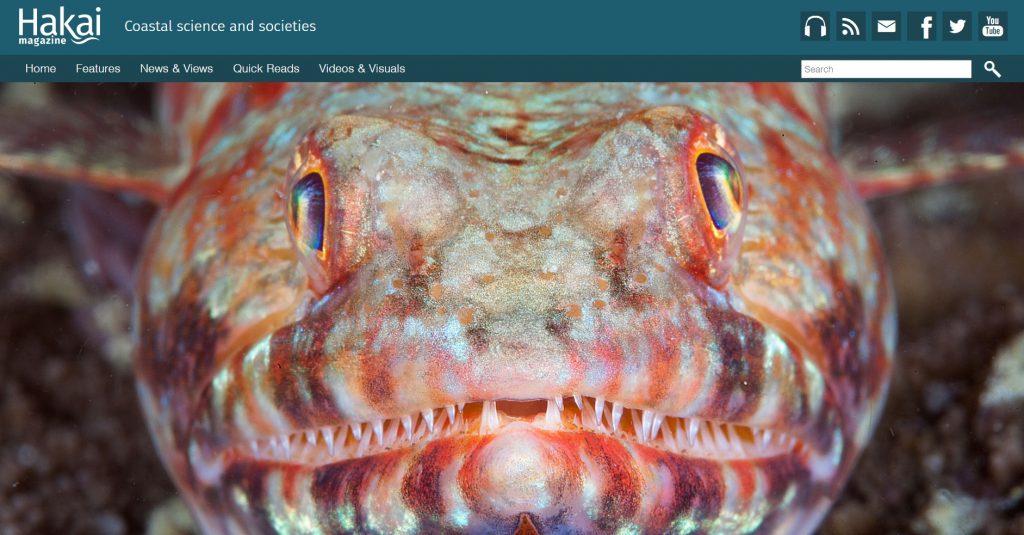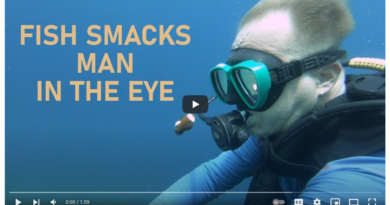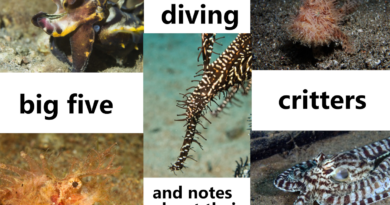Sand Dwellers and Divers
Where I live and dive, in the south of Negros island in the Visayas region of the Philippines, only a minor fraction of the coastlines seamed by coral reefs. Many dive sites are mere sandy planes, but while that sounds boring at first, these are in fact the home of interesting ecosystems. Fish and invertebrates have to resort to a number of strategies to survive: be venomous or poisonous, hide under the sand, or camouflage yourself.
I took this shot of a sand diver, Trichonotus sp., at the end of the last year. These distant relatives of gobies and dartfishes hover in schools above the sand, and when perturbed, dive under the sand – hence the name. The sand divers then often stick the top of their head out of the sand after diving in, to see if the danger has swam off. Their skin has colors and patterns which match the sand grains very well. Hence the sand divers use both the “hiding under the sand” and the “camouflage” strategies.
Here is a video of sand divers performing their escapes. I filmed this with my GoPro at 240fps to be able to slow it down to ultra slow motion:
I’m quite excited about this video!
I wrote this article in Hakai three years ago, it sums up nicely what kind of sand dwellers a keen-eyed diver can expect in the sandy plains of Dauin:
Razor Wrasse
This is a razor wrasse, which disappears very quickly under the sand when approached by a big fish or diver, similar to the sand divers, even though the two fish species are only very distantly related. The behavior of diving under the sand evolved multiple times, convergently and independently.




